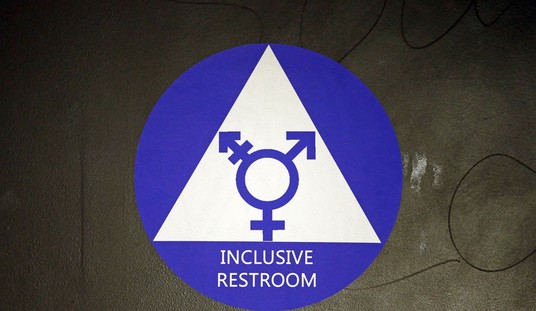The Civil Rights Division at the Justice Department has done it again. Under the supervision of scandal-plagued Deputy Assistant Attorney General Julie Fernandes, the Division has blocked a much-needed reform of a local school board in Fairfield County, S.C. It’s the latest example of what happens when you put a civil rights enforcement unit under a political appointee who opposes race-neutral enforcement of the Voting Rights Act (VRA).
Aided and abetted by her boss, Assistant Attorney General Tom Perez, Fernandes, who is in charge of all voting-related cases, has engineered an illegitimate racial objection to reform in Fairfield County. Her argument finds little support in the VRA and runs counter to Supreme Court precedent. It does, however, neatly reflect the ideology of the ACLU and the Lawyers’ Committee for Civil Rights, which requested that DOJ object. In fact, there is evidence from sources outside DOJ that Fernandes may have overruled the opinion of the career staff that no objection was warranted, an action that liberals (especially those in Congress) raised as “shocking” and “outrageous” when it supposedly occurred during the Bush administration.
Blacks constitute 59 percent of the population of Fairfield County. Blacks also hold six of the seven elected seats on the county school district’s Board of Trustees. As even Justice admits in its objection letter, the school district has been plagued for years with a “poor academic record, accusations of financial impropriety … the perceived ineffective leadership of the school board, the [local] legislators’ inability to obtain any assistance from state education officials, and the repeated requests from constituents, both African American and white, for assistance in improving the district’s schools” (emphasis added).
The Democratic legislators who represent Fairfield County, outraged at the poor education their majority black student population are receiving, took action. They convinced the South Carolina legislature to pass a bill adding two appointed members to the school district’s “ineffective” board of trustees. Enter, the Justice Department. Because South Carolina is covered under Section 5 of the VRA, it had to submit this change in the composition of the school board to the Civil Rights Division for approval.
Under Section 5, the Division is supposed to review changes in “voting” procedures to ensure that the change has neither the purpose nor the effect of discriminating (what is termed “retrogression”) against those voters who are a minority in a particular jurisdiction — in this case, the white population that constitutes only 41 percent of the population.
Yet the objection letter that the Division sent to the school board analyzes this change according to its supposed effect on the black population, which is the majority of the county (the letter found no purposeful discrimination).
DOJ’s actions are completely contrary to the VRA, which was designed to protect all voters (regardless of color) and especially those who constitute a minority in a covered jurisdiction. But the actions are, regrettably, perfectly in line with Fernandes’ oft-expressed (and legally indefensible) view that the VRA protects only black voters and other national ethnic minorities. The Civil Rights Division’s flimsy objection notwithstanding, the change in the number of members of the Fairfield County School Board is not discriminatory in purpose or effect. It is, in fact, a direct response to the desperate pleas of local citizens of every race and color to help them fix their public schools.
The other problem with this objection is that it flies in the face of Supreme Court precedent. In 1992, in Presley v. Etowah County Commission, the Supreme Court defined what kind of voting “changes” are subject to Section 5 review. They include changes in the manner of voting, changes in candidacy requirements, changes in the composition of the electorate, and changes affecting the creation or abolition of an elective office.
The change made in Fairfield County, which adds two appointed seats to the school board, does not fall into any of these four categories. Had the legislation made any changes to the seven elected seats on the board, it certainly would be subject to Section 5 review under other relevant Supreme Court case law (Allen v. State Board of Education and Holder v. Hall). But this change neither “creates” nor “abolishes” any elected office. In fact, the Justice Department admitted in its letter that even under the expanded board, “the number of districts in which African-Americans [sic] voters can elect candidates of choice remains unchanged from the benchmark plan.”
This is a crucial admission, because the key to a Section 5 review is comparing a proposed change to the existing procedure — what is termed the “benchmark” — and the Department is actually conceding that the number of elected positions in the benchmark plan remains unchanged. So there is no Section 5 violation.
But the Division claims there is a violation because the change reduces “the proportion of positions for which minority voters can elect candidates of choice.” That claim also goes directly against the holding in Etowah, which involved the transfer of certain authority for road operations from elected county commissioners to a county engineer. The Supreme Court specifically held that such a change in a county governmental body is not subject to Section 5 because it only concerns the distribution of power among officials; it has no direct relation to, or impact on, voting. The fact that there are now nine members of the Fairfield Board of Trustees, instead of seven, only concerns the distribution of power among its members and has no direct relation to, or impact on, the voting of the citizens of the county for the seven unchanged elected seats.
The Department’s lack of a sound legal basis for its objection is evident in its letter to the school district. It consists almost entirely of a recital of how other states like Mississippi and Texas have handled similar problems with bad local school boards. And none of that has any relevance whatsoever to a Section 5 legal analysis of the effect of what the South Carolina legislature enacted in Fairfield County. Section 5 requires a comparison between a proposed change and the benchmark in that particular jurisdiction. What may have been done in other states is simply irrelevant. The Department also put great emphasis on the fact that the legislature in this case undertook its actions on an ad hoc nature. Once again, there is no relevance whatsoever to that point in a Section 5 review of the supposedly retrogressive effect of a “voting” change.
But the most troubling revelation about this case is the way it shows, once again, the skewed enforcement views of Fernandes’ Civil Rights Division. Even if the increase in school board seats were subject to Section 5 review, the VRA is supposed to protect the racial minority in a jurisdiction. Yet the four-page Justice Department letter talks only about the supposed effect of this change on the county’s majority population: blacks. Julie Fernandes and Tom Perez evince no interest in protecting minority voters if they are white.









Join the conversation as a VIP Member